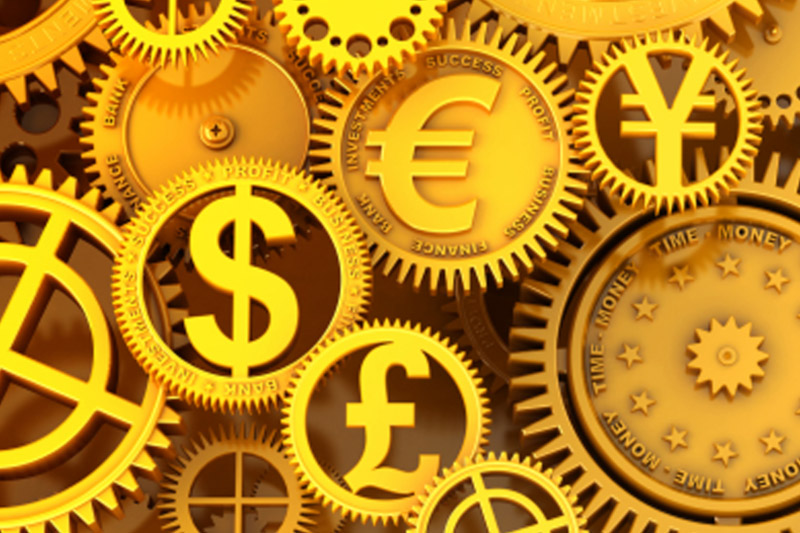Investing.com - The U.S. dollar was broadly higher against its major counterparts on Wednesday, after Federal Reserve Chairman Ben Bernanke did not exclude the possibility of fresh easing measures and after a massive liquidity operation by the European Central Bank earlier in the day.
During U.S. morning trade, the dollar was up against the euro, with EUR/USD shedding 0.62% to hit 1.3374.
In testimony to the House Financial Services Committee in Washington, Bernanke said he expects growth this year to continue "at a pace close to or somewhat above the pace" in the second half of 2011 and added that the bank was prepared to adjust the balance sheet “as appropriate” to support the economic recovery.
The remarks came after the U.S. Commerce Department reported that gross domestic product increased at a seasonally adjusted annual rate of 3.0% during the fourth quarter, up from a preliminary estimate of 2.8%.
The euro slid against the greenback earlier after the ECB’s second long-term liquidity operation met with robust demand, bolstering demand for higher yielding assets at the expense of the single currency.
The ECB allotted EUR529 billion in three-year loans to European lenders, after receiving bids from 800 banks, significantly more than in the bank’s first long term refinancing operation late last year.
But the greenback was lower against the pound, with GBP/USD adding up 0.16% to hit 1.5925.
In testimony before the U.K. parliament’s Treasury Committee earlier, Bank of England Governor Mervyn King dampened expectations for further monetary easing and said the ECB’s liquidity injection has removed the possibility of a bank run in the euro zone.
The greenback was higher against the yen and the Swiss franc, with USD/JPY rising 0.44% to hit 80.81 and USD/CHF surging 0.70% to hit 0.9019.
Earlier in the day, official data showed a larger-than-forecast increase in Japanese industrial production in January and indicated that output was expected to continue to rise in the coming months.
In Switzerland, a report from the KOF Economic Institute showed that the country’s economic barometer improved slightly in February after entering the negative territory in January for the first time since 2009.
The greenback was lower against its Canadian, Australian and New Zealand counterparts, with USD/CAD dropping 0.60% to hit 0.9894, AUD/USD easing up 0.12% to hit 1.0776 and NZD/USD rising 0.35% to hit 0.8405.
Official data earlier showed that Australia’s retail sales rose for the first time in three months in January, gaining 0.3%.
In New Zealand, data showed that business confidence rose significantly more-than-expected in February, while buildings consents jumped higher in January.
The dollar index, which tracks the performance of the greenback versus a basket of six other major currencies, rose 0.55% to hit 78.67.
Also Wednesday, data showed that manufacturing activity in the Chicago area increased more-than-expected in February, rising to the highest level since April of last year.
Market research group Kingsbury International said its Chicago purchasing managers’ index rose to a seasonally adjusted 64.0, up from a reading of 60.2 in January and outstripping expectations for an increase to 61.8.
During U.S. morning trade, the dollar was up against the euro, with EUR/USD shedding 0.62% to hit 1.3374.
In testimony to the House Financial Services Committee in Washington, Bernanke said he expects growth this year to continue "at a pace close to or somewhat above the pace" in the second half of 2011 and added that the bank was prepared to adjust the balance sheet “as appropriate” to support the economic recovery.
The remarks came after the U.S. Commerce Department reported that gross domestic product increased at a seasonally adjusted annual rate of 3.0% during the fourth quarter, up from a preliminary estimate of 2.8%.
The euro slid against the greenback earlier after the ECB’s second long-term liquidity operation met with robust demand, bolstering demand for higher yielding assets at the expense of the single currency.
The ECB allotted EUR529 billion in three-year loans to European lenders, after receiving bids from 800 banks, significantly more than in the bank’s first long term refinancing operation late last year.
But the greenback was lower against the pound, with GBP/USD adding up 0.16% to hit 1.5925.
In testimony before the U.K. parliament’s Treasury Committee earlier, Bank of England Governor Mervyn King dampened expectations for further monetary easing and said the ECB’s liquidity injection has removed the possibility of a bank run in the euro zone.
The greenback was higher against the yen and the Swiss franc, with USD/JPY rising 0.44% to hit 80.81 and USD/CHF surging 0.70% to hit 0.9019.
Earlier in the day, official data showed a larger-than-forecast increase in Japanese industrial production in January and indicated that output was expected to continue to rise in the coming months.
In Switzerland, a report from the KOF Economic Institute showed that the country’s economic barometer improved slightly in February after entering the negative territory in January for the first time since 2009.
The greenback was lower against its Canadian, Australian and New Zealand counterparts, with USD/CAD dropping 0.60% to hit 0.9894, AUD/USD easing up 0.12% to hit 1.0776 and NZD/USD rising 0.35% to hit 0.8405.
Official data earlier showed that Australia’s retail sales rose for the first time in three months in January, gaining 0.3%.
In New Zealand, data showed that business confidence rose significantly more-than-expected in February, while buildings consents jumped higher in January.
The dollar index, which tracks the performance of the greenback versus a basket of six other major currencies, rose 0.55% to hit 78.67.
Also Wednesday, data showed that manufacturing activity in the Chicago area increased more-than-expected in February, rising to the highest level since April of last year.
Market research group Kingsbury International said its Chicago purchasing managers’ index rose to a seasonally adjusted 64.0, up from a reading of 60.2 in January and outstripping expectations for an increase to 61.8.
